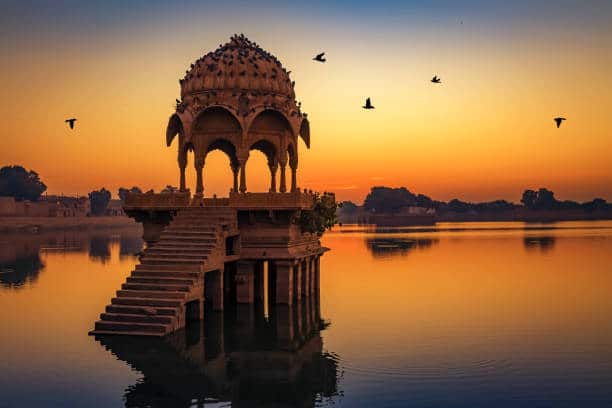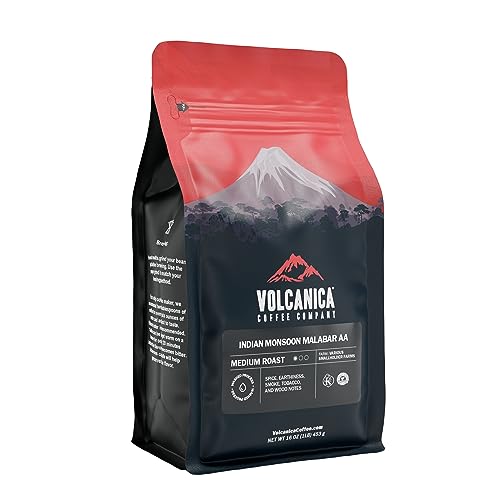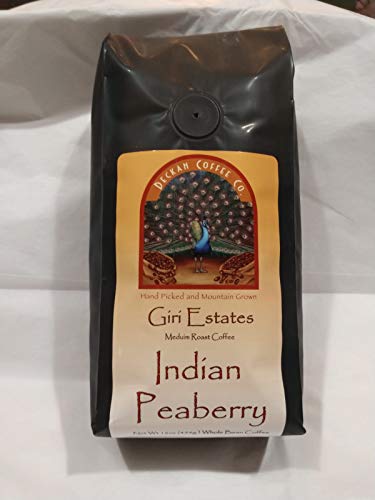Coffee is something that a lot of people drink every day. While there are many different types of coffee, many people are unaware that the type of beans you use can significantly affect the taste.
Coffee beans are probably not the first thing that comes to mind when you think about India. After all, the country famed for tea and yoga isn’t nearly as big a coffee producer as Brazil or Colombia.

Nonetheless, Indian coffee traditions date back centuries, making other Latin American countries look like amateur imitators in comparison.
Despite decades of neglect and a reputation for poor quality, the Indian coffee sector has recently experienced a revival. You may now get your hands on some very exotic beans, such as Arabica, that have been treated with monsoon rain.
We put together this list of the best Indian Coffee Beans available for purchase. These beans have a unique flavor profile and have been roasted to perfection. They’re worth trying!
Best coffee beans brands in India
Here are the best Indian coffee beans for your home:
Coffee Bean Direct Indian Monsooned Malabar
- Offer whole beans, coarsely ground beans, and finely ground beans.
- Light, medium, and dark roasts are available
- Blends and tastes created by artisans
Let’s start with the most well-known of Indian coffees: Monsooned Malabar. During the monsoon season, these beans are exposed to the elements to receive moisture from the air and sea. The result is an unrivaled smoothness, with a medium body and a lovely finish.
Furthermore, the coffee is low-acid, making it suitable for people with GERD.
It’s hardly unexpected that reviews have complained about the lack of batch-to-batch uniformity. Like wine, coffee is highly influenced by temperature and rainfall, and Monsooned Malabar is no exception.
If you notice the Coffee Bean Direct blend changes from bag to bag, I recommend pausing for a few months and returning in six months. You might find yourself re-appreciating the brew.
Although the smooth flavor of this bean makes for a weak espresso, it works well in a French press, Aeropress, Moka pot, or drip machine. The medium roast (City) balances the mellow flavor and works well in a cold brew.
Furthermore, if you choose the whole-bean option, you will always obtain freshly ground java. The 5-pound bag will last a few months and cost about $50, which is a bargain for a gourmet bean.
Aroma Ridge Indian Monsoon Coffee
- Acidity is low
- During the Monsoon rain season, green coffees are stored in open warehouses, imparting a distinct flavor.
- Aging mimics the particular flavor produced by a long trip on a sailing ship.
Another monsoon coffee worthy of your notice is this one. The Arabica is farmed in India and exported to the United States, where it is roasted, ground, and packaged before being delivered to your home.
Instead of an overbearing, powerful flavor, you’ll get the smoothest, most balanced cup of coffee you’ve ever had, precisely suited for everyday caffeine rituals. Given the reasonable price ($18 for a one-pound bag), this monsoon coffee can become a pantry staple rather than a one-time treat.
Aroma Ridge may not be the most well-known American roaster, but it certainly prioritizes the needs of its clients. For starters, you may choose from various grinds, including whole bean, espresso, and Keurig grinds. If this mix doesn’t meet your expectations, they promise a full refund, though I’m not sure how simple the return and reimbursement process is.
This blend appears to be a little lighter and more refined than Coffee Bean Direct. And I believe that a one-pound bag of beans will keep fresh and excellent for longer, whereas a five-pound bag will go stale before you finish it.
So if you’ve never tried Indian monsoon java, I propose you start with Aroma Ridge as the most economical option on this list.
Volcanica Monsoon Malabar AA
- Bean type: Arabica
- Best for: French press, Moka pot, espresso
- Ground or whole bean: Either
It’s critical to try the distinct Monsoon Malabar beans first to obtain a true sense of Indian coffee. These coffee beans go through a unique procedure, giving the resulting java a particular flavor and full-bodied texture.
Monsoor Malabar by Volcanica Coffee is made using AA grade beans, the highest grade available. They’re supplied by various local growers and are Rainforest Alliance certified. This certification guarantees that its manufacturing was done in a way that was environmentally, socially, and economically sustainable.
Monsooned Malabar beans are thick in texture and have a woody or earthy flavor. It’s often compared to beans from other Pacific islands such as Sumatra and Sulawesi. This Volcanica medium roast is a great example.
It features earthy, spicy, woody, tobacco, and smoky overtones. However, this strange-sounding mix tastes incredibly smooth because of its low acidity and natural sweetness. Use a brewing method highlighting coffee’s rich texture, such as a French press or espresso.
Deckan Coffee Indian Peaberry Giri Estates
- Bean type: Arabica
- Best for: Pour over, Aeropress
- Ground or whole bean: Whole bean
Because peaberry coffee is so uncommon, it’s always a delight. It’s the outcome of a natural mutation that causes a coffee berry to produce only one bean instead of two. The peaberry, being a single bean, receives all of the nutrients it would normally share, resulting in a richer and more flavorful brew, according to many.
That theory appears to be supported by this example from Deckan coffee roasters. It has a subtle flavor, a smooth texture, and light acidity, but its defining feature is its surprise sweetness. You may no longer find it necessary if you normally sweeten your coffee with sugar.
The coffee is grown in the Giri mountains of southern India’s Karnataka area, one of the country’s key coffee-growing regions. The plants are sheltered by the trees and surrounded by a diverse ecosystem. The coffee is hand-picked to sift out the peaberries, ensuring that only the best beans are cut.

Indian Coffee History
Baba Budan, a Yemeni pilgrim, is said to have planted the first coffee trees in the Chikmagalur hills in the late 1600s.
Coffee was viewed as nothing more than garden ornaments for generations, and it wasn’t until the middle of the 1800s that it became a part of Indian culinary tradition. So don’t believe the wild legends about coffee beans and rituals in Ancient India.
Unfortunately, the coffee business was mostly controlled by the government for a long time, resulting in its near destruction. For one thing, most of the beans were kept in the country and processed into low-cost instant coffee. Furthermore, the product’s quality was so poor that even locals disliked Indian coffee.
Coffee farmers had not become aware of the worldwide caffeine revolution until the middle of the 1990s, when they seized control of their land and crops.
The third wave of Indian coffee brought a new generation of farmers and roasters and a slew of specialized cafes to cater to the country’s ever-growing population.
Finally, Indian coffee began to make its way outside the country’s boundaries, and it quickly rose to the top of java connoisseurs’ wish lists.
Coffee in India
Coffee cultivation is primarily prevalent in India’s southern highlands states. Kamataka controls about 71 percent of total production. Unlike those grown in direct sunshine, Indian coffee beans are the best shade-grown items.
Kinds of coffees beans grown in India
Organic Arabica and Robusta coffees are the most popular in India.
Arabica
Arabica produced in India has a mild flavor with a sweet and tangy taste and a well-balanced scent. They don’t have as much caffeine as Robusta. The bean is harvested from November to January.
The type is grown at high elevations ranging from 600 to 2000 meters above sea level, in cool temperatures with high humidity and subtropical-like weather conditions. The crop requires nutrient-rich soil that is conducive to high-end grade coffee. Cauvery and Kent are two well-known kinds of this sort of coffee.
Robusta coffee
This type contains twice the amount of caffeine as Arabica. It has a deep and powerful flavor with notes of gritty and peanuts in the aftertaste. Low-altitude cultivation is possible for Robusta beans. Between December and February, the cherries are harvested.
The plants are resistant to agricultural diseases and pests and can withstand any climatic condition. Though Robusta is considered inferior to Arabica in terms of quality, the upper end of this variety is prized by many for the crema and robust flavor it produces.
When compared to Arabica, Robusta takes less time to achieve results. CXR and S.274 coffee are the two main robusta kinds grown in India.
Varieties that are grown in India by plant

Kent coffee
This is the world’s earliest Arabica coffee, created in India in the 1920s by an Englishman named Kent. The plant is well known in the coffee industry for its resistance to leaf rust. It’s also known for its high-quality coffee. However, it’s only grown in a few parts of India.
Cauvery
It’s also known as catimor. It crosses the well-known Caturra coffee, bourbon high-quality coffee organic mutant, and hybrid-de-Timor. Caturra gave it the high-end standard, while Roya gave it the royal resistivity.
S.795 coffee
This is a well-known Indian variety that was first grown in the 1940s. Its high yields, bold flavor, great quality, and resistance to leaf rust in coffee plants are noted. Kent, a high-end coffee bean, is a descendant. It is extensively grown in India and is known for its mocha coffee’s mild taste hints.
Sin.9 coffee
This is a hybrid bean mix of tafarikela, which is descended from Ethiopian Arabica beans, and the de Timor hybrid. It’s a high-quality Arabica coffee that won the India Cup competition for finest Arabica bean in 2002.
Coffee varieties by regions in India conditions for growth
Tamil Nadu
The Anamalais region produces this coffee. This region has ideal growing conditions for coffee, with elevations ranging from 1000 to 1400 meters above sea level and rainfall quantities ranging from 2500 to 3000mm.
Arabica coffee beans are the most common variety farmed here, including exceptional variants like Cauvery and S.795. This region’s Arabica coffee beans are larger, with a green-gray look, and have a stronger scent and citrus undertones.
Andhra Pradesh
The coffee is grown at 900 to 1100 meters above sea level in the Araku Valley. Rainfall averages between 1000 and 1200mm per year. Arabica is the most common coffee bean varietal farmed here. This region’s coffee is known for its fruity overtones with a highly spiced scent and mid to strong, sharp acidity, medium body, and fruity notes with a medium body.
Karnataka coffee beans from Bababudangiris
This coffee is grown in Bababundangiris, at elevations ranging from 1000 to 1500 meters above sea level, with an average annual rainfall of 1750 to 2200 millimeters. Arabica is the most common kind cultivated here.
This is where India’s first coffee produced here is full-bodied, with a pleasing aroma and mid-acidity flavor. Only the highest-quality coffee is chosen for fermentation and natural processing. They have a particularly rich flavor because they have been delayed in ripening.
Tamil Nadu/ Karnataka
This coffee is grown in Biligiris, where the average annual rainfall is between 1100 and 1200mm and heights range from 1500 to 2000 meters above sea level. Organic Arabica is one of the most popular types farmed here.
Because of the cold and misty air brought on by high altitudes, the coffee cherries take longer to ripen. It can also be found growing among the silvery oak tree fruit plants. They have a big body, a lovely and sweet attractive scent, and a characteristic mild flavor.
Brahmaputra coffee
Coffee is produced at altitudes between 800 and 1200 meters above sea level. The annual rainfall ranges from 1500 to 1200 millimeters, and Arabica is the most common coffee variety cultivated. There is less amount of coffee farmed there. It has a robust body and special overtones of fruitier taste, as well as a lovely scent and mild acidity.
Chikmagalur coffee/ Karnataka
Coffee is farmed at elevations from 700 to 1200 meters above sea level, with annual rainfall ranging from 1000 to 4500 millimeters.
Both Robusta and Arabica coffees are grown in the area. The region is home to some of the world’s largest coffee farms and is one of the world’s major coffee-growing regions. It has a medium body, a low acidity flavor, and a medium to strong scent.
Coorg, India’s largest coffee zone, is another coffee-growing region in Karnataka. Manjarabad is another small coffee-growing region known for its advanced technologies. This coffee has a medium body, medium acidity, and a medium to strong scent.
Nilgris, Pulleys, and Sheveroys are among the coffee-growing regions in Tamil Nadu. Karnataka and Tamil Nadu, along with Kerala, are traditional coffee-growing regions in India, with Robusta being the most common.
The primary coffee-growing regions in Kerala are Wayanad and Travancore. Robusta coffee is known for its full-bodied flavor, gentle or neutral acidity, and powerful chocolatey fragrance.
South Indian coffee: filtered coffee
This is a robust coffee from south India that has been filtered. It’s usually robust and has a creamy undertone. The coffee is normally made with a stainless steel filter and is served in a traditional tumbler with Dabarah. Instant coffee is the norm in India. Many people prefer this coffee brewing method because it makes a superior cup of instant coffee to any other.
And today?
India is now the world’s seventh-largest coffee grower, with the southern area continuing to dominate the industry. Karnataka, Kerala, and Tamil Nadu are the top coffee-growing states, with Karnataka accounting for more than 70% of total production. To the east, some coffee is farmed in Andhra Pradesh and Odisha.
Coffee from India is often sweet and mild in acidity, though this varies depending on the origin. The majority of coffee in India is shade-grown, according to the Coffee Board of India. This is due to the demands of the climate, but one positive side effect is the abundant biodiversity it fosters.
Conclusion
If you’ve never experienced Indian beans, you’re missing out on some of the best coffee on the planet.
Despite its tarnished reputation over the last century, India has made a comeback with artisan, gourmet coffee that will leave you wanting more after just one sip. Even if you’re still undecided about Indian coffee beans, put monsoon-processed coffee on your shopping list, and you’ll thank me later.
Disclaimer: This post contains affiliate links, which means I may receive a small commission, at no extra cost to you, if you make a purchase using these links. Remember to support us by purchasing through the Amazon/Walmart/Impact Radius links provided. Last update on 2024-04-25 / Affiliate links / Images from Amazon Product Advertising API
Disclosure: No compensation or free products were received in exchange for writing this review.

Editorial Staff
The editorial staff at Crazy Coffee Crave is a team of coffee enthusiasts & Baristas who enjoy the one thing we all think about as soon as we get up in the morning. Trusted by thousands of readers worldwide.









